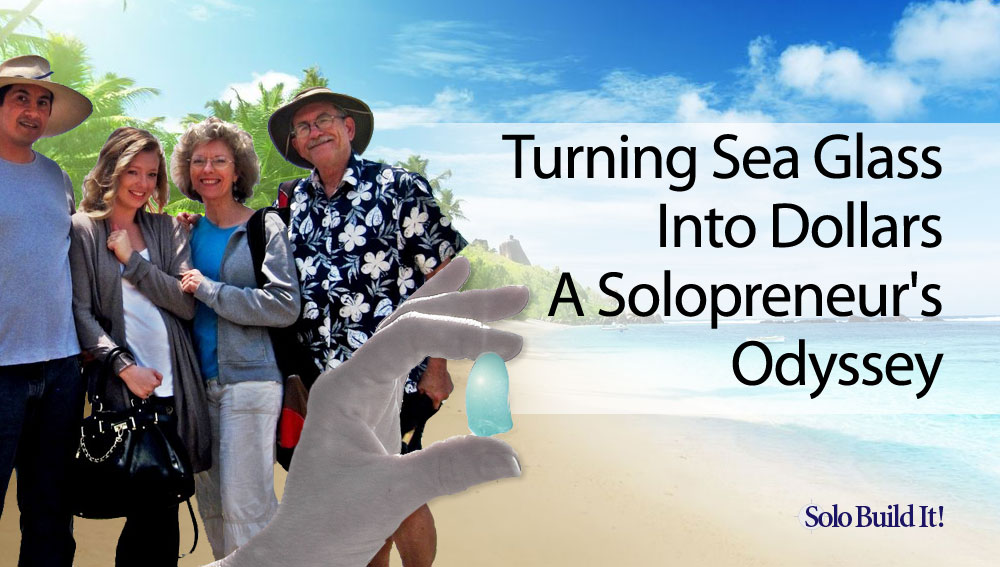
With SBI!, there is even more freedom — to choose when and how you’ll work. As a family we love being together 98% of the time, whether in the home office or on the beach “working.”David and Lin Schneider from odysseyseaglass.com
This Digital Nomad Couple found Their Business on a Beach
David and Lin Schneider consider themselves “beach people.” They currently live 2 blocks from the beach in Huanchaco, Peru, where they enjoy walking the beaches together searching for sea glass.
“Where, Peru,” you might ask? We’re not finished yet..
Before that, they had lived in the United States, Hawaii, Ecuador, Bolivia and Nicaragua. We’ll skip the unpronounceable names of the last three for now.
The best way to support such a nomadic lifestyle? Make your own “job,” one you can take with you. David and Lin are pioneers of the “digital nomad” trend. They’re not “earning a living.” They turned online to “earn a life.”
They originally trained to do medical transcriptions. But they were on the hunt for a better option, one that would provide them with even more freedom. That’s how their odyssey into the land of solopreneurism began. It all started with… Sea Glass
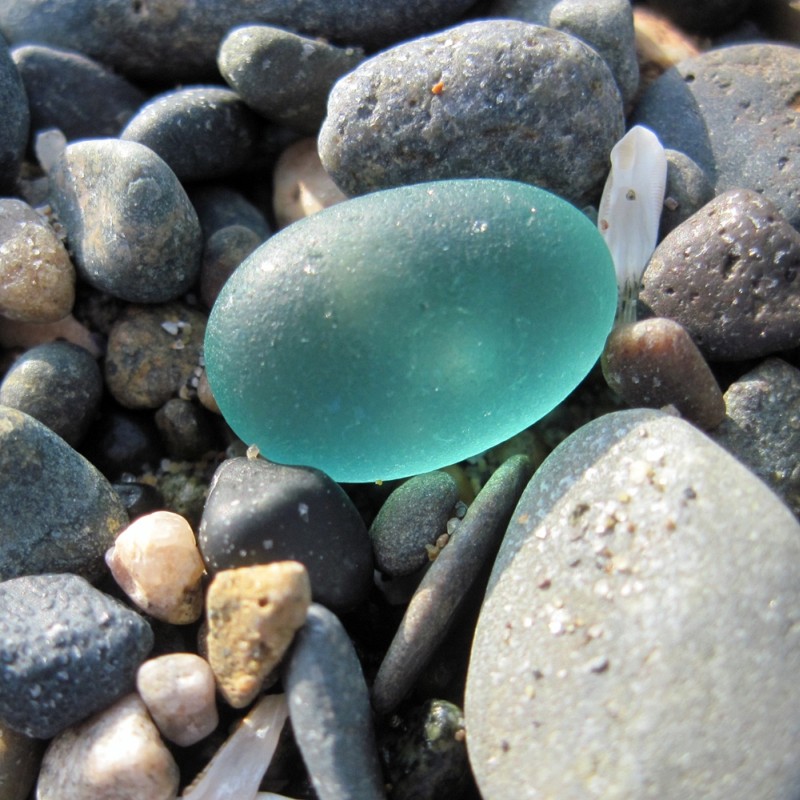
1. Tell us a little about yourself, David, about your professional background, and how and why you decided to start an online business with Solo Build It! (SBI!).
I’ll be 70 years old this year.
I have been married to my wife Lin for 30 years. We have one daughter and I have two sons from my first marriage. I was born in Lima, Peru to my USA parents. English is my first language but I also speak Spanish fluently.
Lin and I live in Huanchaco, Peru, at the present time. We spend much of our time as volunteers involved in free Bible education as Jehovah’s Witnesses here in Peru.
I have worked mainly for myself most of my life doing landscaping, cleaning and construction. I am also a professional guitarist, working off and on over the years. I learned to surf in California in high school, and the beach has been a big part of my life.
When I was 50 I was forced to learn to use the computer due to back problems requiring a change of occupation. I did medical transcription online for a number of years alongside my wife.
Our main business is OdysseySeaGlass.com, so these comments will refer primarily to that website.
Lin began collecting sea glass years ago and around the “turn of the century” was making sea glass jewelry. She was looking for a way to display and sell her products online.
2. What were your initial goals when you started your business? Have these goals changed over time?
Lin wanted to sell her sea glass jewelry online. While researching possible options, she stumbled across an SBI! site. After reading up on SBI! and SiteSell, we decided to use SBI! to showcase her jewelry.
But soon the site took on a life of its own as an informational site on sea glass. Now that Lin does not make jewelry anymore the site is an informational site most of the year. However, when we travel back to the USA for a month or so each year we sell the sea glass we collected. The mailing list we built up via our SBI! site is a big help for making those sales.
Big eCommerce providers like Shopify and Volusion make you believe that all you have to do is put up a shop and your customers come stomping through your virtual doors. The reality is that no one will find your shop unless you drive traffic to it via ads. It’s possible to sell items through online marketplaces like Etsy and eBay. But you’ll depend totally upon them if that’s all you do. That makes you vulnerable to rule changes, increases in fees, etc. There’s a much better way… David and Lin took the smarter route. They may not have fully realized it when they started with SBI!, but an informational site is the ideal generator of free targeted traffic to your store. And, if you ever decide to stop “making and selling,” your business still generates solid income through other avenues. It’s simple. What do people do before buying a product? They research online. They want information, answers to their questions, a source they can trust before pulling out their wallet. The SBI! “Content Traffic PRESell Monetize” process guides you to being this trusted source in your niche.
3. Tell us about your philosophy regarding content. How do you know what your prospective customers are looking for? Where does this information come from?
In two words: Brainstorm It!. It’s one of the main reasons why we love SBI!. All of our writing and research is based on our Brainstorm It! results. From our very small niche, Sea Glass, to our huge niche, Peru, this tool has been invaluable. I still use it regularly to research new topics.
In addition, we get new content ideas from our readers. We know that they are looking for information on sea glass, what it is, how to use it, etc. We use Content 2.0 (C2) heavily as well as Facebook commenting. Based on the most popular questions submitted via these two ways, we create new web pages.
A large part of our content is submissions from the visitors themselves — photos and beach reports. We add related content when needed to buff out those reports.
This approach engages your visitors, while the content gets found by Google, generating more traffic for you!
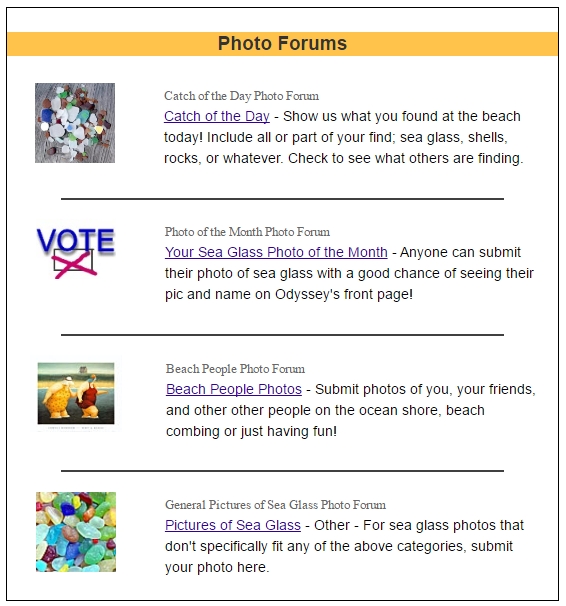
4. You hold monthly photo contests on your Odyssey Sea Glass site. How did you come up with this idea? How does your business benefit from the contests?
Our main motivation for starting this site was to showcase my wife’s handmade sea glass jewelry. So the niche was predetermined and we stuck to it, although SBI!’s research process showed us that its traffic and income potential was low. I never would have chosen this niche based on numbers alone.
When I started creating content, there was a very limited number of good keywords. So I thought there must be some way to get viewers to submit content for me. Since the niche is very visual (people want to see photos of sea glass), I came up with the idea of a photo contest.
My business benefits in two ways…
First, I get fresh content on a regular basis, and it’s content that my visitors love most (photos of sea glass).
Secondly, I ask visitors to vote for the best entries by sharing them to their social networks. That helps me to increase social shares, which in turn increases traffic to our site.
David and Lin went through this research process. The numbers indicated that the sea glass niche was small. But, as Brainstorm It! advises… Numbers are dumb. They are useful guidelines, but only humans can apply the judgment. We remind people not to become “numbers-bound.” Lin and David followed this advice. They decided to go with their small niche, fully aware of its lower profit potential. That’s very different from blindly starting an online business (like most solopreneurs do) and only later finding out that there’s not enough demand or not enough ways to monetize it.
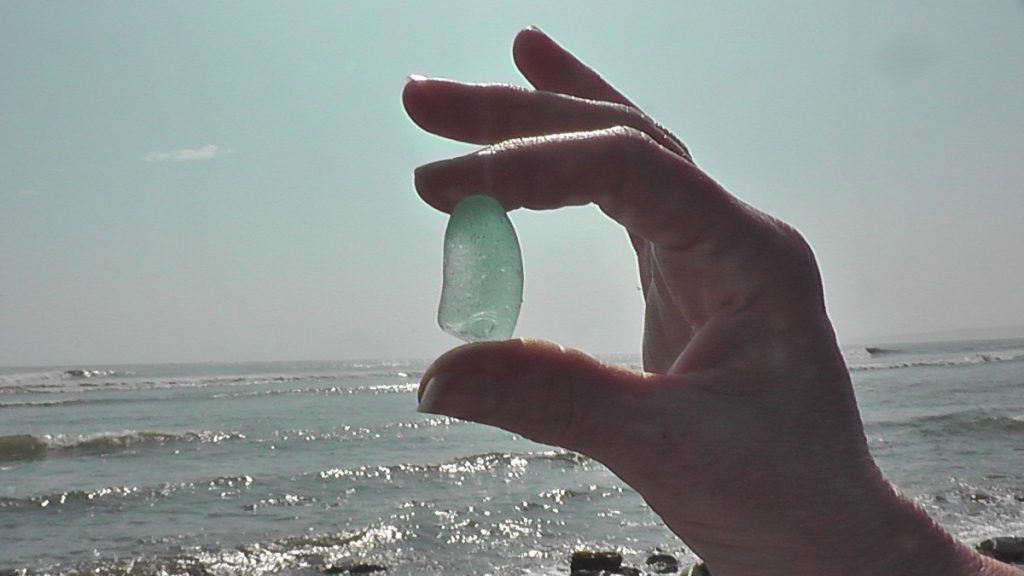
5. How long did it take to start earning income from your businesses? Is it a full-time income (replacing a job) or a part-time income?
You’re asking me to look back 8 years, something I never do. 🙂
If I recall correctly, it took about 10 months to get some solid AdSense earnings coming in. For a few years, the income from AdSense and affiliates paid our food and rent plus some. With the downhill slide of AdSense and affiliate marketing in recent years, we see the need to develop more products to sell.
I am getting some Social Security income but without the online income we would not be able to live wherever we want in the world — especially near the beach in a sunny climate.
Your solopreneur career may not generate a full-time income if your niche is really narrow, but it may provide something much better: freedom (to choose where to live, to work from home, to do something you love). The digital nomad trend is growing. Everyone from millennials to septuagenarians can explore the world – especially safe, developing nations. Between a lower cost of living and tax-free income (many countries don’t tax income that is not earned locally), you really can “earn a life” and not just a living. Many quickly realize that they don’t really need the cold weather, high taxes and stress of the “developed world.” Making your own job enables you to live life on your terms. It’s a small world and life is short. Why live it any other way?
6. How many different revenue streams do you have? Which ones perform best?
AdSense was our main source of income for a number of years. We also tried various affiliate programs, but only a few brought in more than a few cents. Those included Zazzle and Amazon.
Since sea glass is such a small niche, there are very few advertisers vying for our traffic. AdSense rarely offers any ads that are relative to our niche. With Amazon, you can pick and choose the products that you want to put in front of your viewers — highly relevant products.
We’ve started to add more Amazon links and are finding that Amazon is doing better than Google AdSense overall.
Our main income stream is selling the sea glass we collect. We have an an Etsy shop but it is only “stocked” for about 2 months out of the year. Why only for two months? Because we can only ship the sea glass when we visit the United States.
To expand their business, they could build a network of suppliers all along the coast and sell the sourced raw material or finished sea glass products via their Etsy store. It’s a WIN-WIN-WIN… It takes some finding and training of local people who would like to earn money by collecting sea glass. Once it’s done, though, locals earn much needed income, folks who trade sea glass have a much greater choice (and quantity) and our heroes multiply income from this particular monetization model! It’s also an excellent example of scaling-up a business. If you can do something once profitably, ask yourself how to do it 1,000,000 times. Hint: Outsource!
It’s possible to ship from Peru but is not really practical in our situation. Our sales involve shipping several orders every few days. The only place to ship from is the main post office in the nearby big city of Trujillo. That means a bus or taxi in the craziest downtown traffic and killing around 3+ hours just to ship any small purchase.
So when we go to the U.S., we “open shop.” We promote the shop heavily to our mailing list of about 3,600 sea glass fans. We also blog regularly about what we have for sale and include our own “ads” on our web pages.
Developing a loyal following using our newsletter and social media, we have great success with the focused mailing list that leads to buyers for our sea glass. This brings us in thousands of dollars in sales in a short time.
Without a mailing list as well as a Facebook and Pinterest presence we’d be pretty much lost in the millions of shops on Etsy and would not make this number of sales.
Remember the Content Traffic PREsell Monetize process mentioned above? This is it in action…
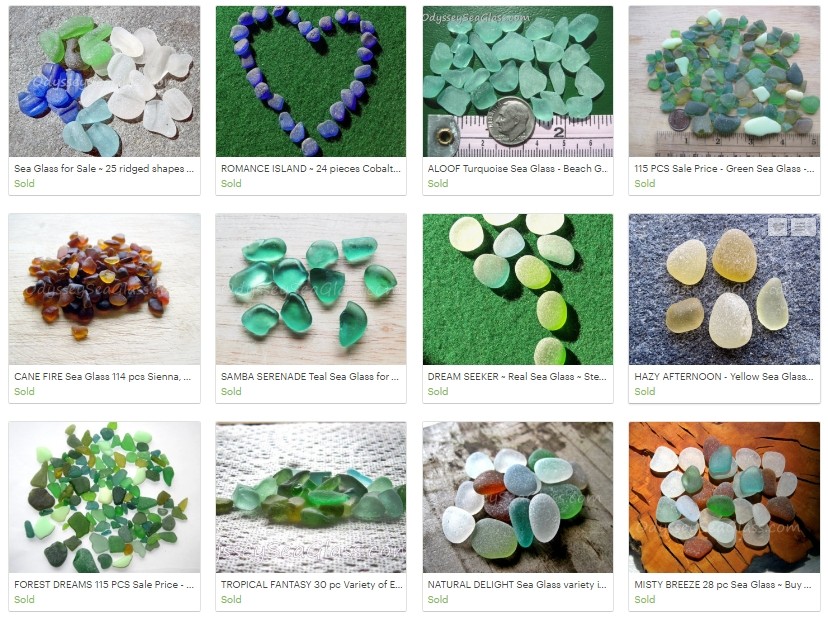
Editor’s note: We asked David for tips about running an Etsy shop. Here’s what he said…
Tip #1: Photos
Excellent photos are key to selling on Etsy.
Tip #2: Discount Coupons
Offering discount coupons is a great idea too, like “enter code 20SALE on checkout to get free shipping on purchases over $20.00.” Or offer your buyers a discount on future purchases.
There are lots of ways to use discounts. I especially like this idea: if you sell most of your items for $19.95, offering a coupon with a discount of up to 25% on purchases over $20.00 can double your orders (adjust prices accordingly).
Tip #3: Reviews
Encourage buyers to leave a positive review and be quick to respond to questions or complaints.
7.Do you use social media to promote your online business? If yes, which platform(s)? Has it had an impact?
Yes we use Facebook and Pinterest regularly, Twitter and Instagram occasionally. Pinterest has proved to be the best for bringing traffic to our website.
While there are loads of articles on each of the social media in SBI!, we’ve learned that the Action Guide is a big part of why so many everyday people succeed. The combination of information and step-by-step actions, together with software tools as needed, really works. Bringing the Action Guide concept to how SBIers approach social media will develop more social media stars, too. Some folks do figure it out, of course. But soon many more will be succeeding with social, and at much higher levels. It’s more work to develop this approach, so we’ll charge for each of the guides, right? Not! Everything is always included in the monthly or annual price of SBI!. No upselling.
8. You build your online businesses as a husband and wife team. Do you have any tips for how to best organize this?
Divide the work in a way that best suits you so each knows what his/her jobs are. Lin is much better at finding sea glass and sorting it, but dislikes doing any of the other work.
So I end up with the “sit in front of the computer” work. Actually, I enjoy working on the computer so it works out fine.
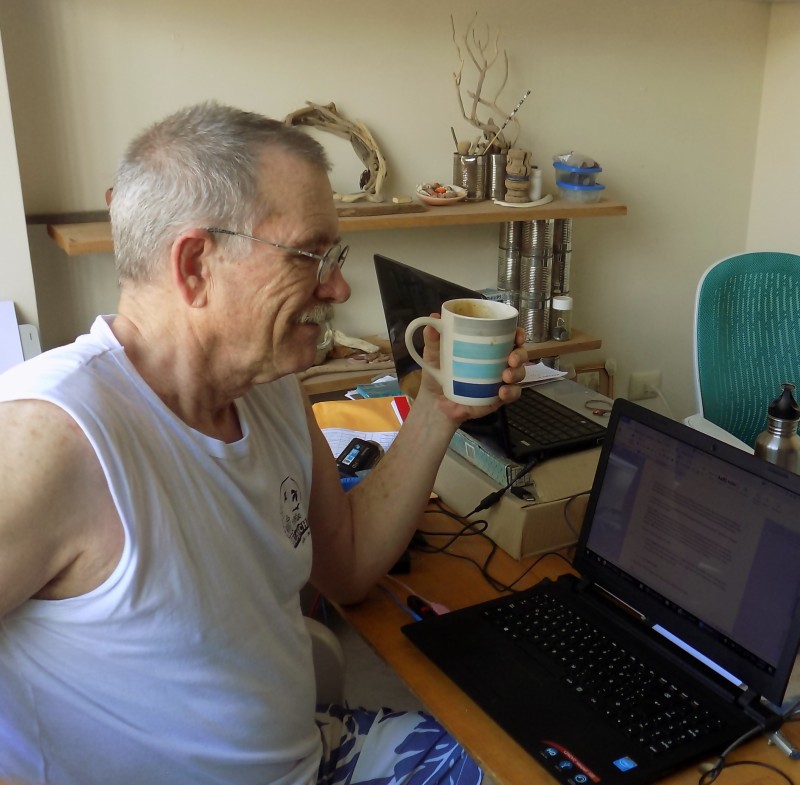
9. What has been your biggest challenge so far as a solopreneur?
By far the biggest challenge has been keeping up with the changes in internet usage including social network platforms and tools. When we started in 2008, there was not much competition, few social networks, and basically everyone used a desktop computer to access our sites.
Now it’s impossible to keep up with posting to all the latest social platforms, making necessary changes to address mobile device usage, and making decisions among hundreds of tools possibly needed to keep up with the competition.
Keeping up with the key changes and developments for running a profitable online business. And not only keeping up, but knowing which developments are important to follow and which ones can or should be ignored. In a recent survey, we asked our customers for the top 3 ways in which SBI! has helped them succeed. In third place was the fact that SBI! provides them with exactly the information they need to know (at any given point in time) and which action — if any — they have to take to stay current with today’s online business requirements. This 70-year old couple finds it challenging to keep up, but they don’t have to figure it all out by themselves. We not only deliver the info that they need, when they need it. We’ll add the tools, too, to make their work as focused and effective as possible.
10. And finally… What do you enjoy most about being an online business owner? How has it changed you, your life, your family?
Back in 1998 we were living in Ecuador where I was teaching. But that job burnt me out. We realized that if we wanted to live anywhere in the world and keep our job, we had to work online. Both Lin and I eventually were doing medical transcription online and living in various countries.
With SBI!, there is even more freedom — to choose when and how you’ll work. As a family we love being together 98% of the time, whether in the home office or on the beach “working.”
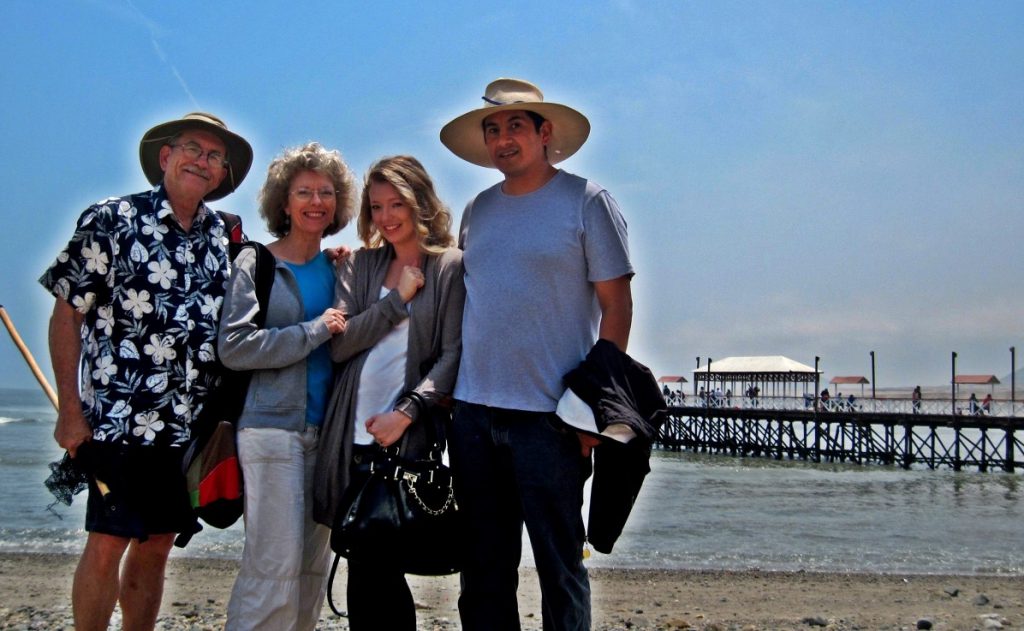
If you have the BAM, we have the means.
KEY TAKEAWAYS
- Have a product to sell? Follow SBI!’s C T P process to drive a constant stream of pre-sold, willing-to-buy visitors to your store. Unless, of course, you have a huge advertising budget. 😉
- Research and assess the income potential of your business idea. You may still decide to go with a less profitable niche, but at least you’re aware of it before you invest time and energy.
- Money isn’t the only way to measure success. Your solopreneur career may not generate a full-time income, but it may provide something much better: freedom (to choose where to live, to work from home, to do something you love).
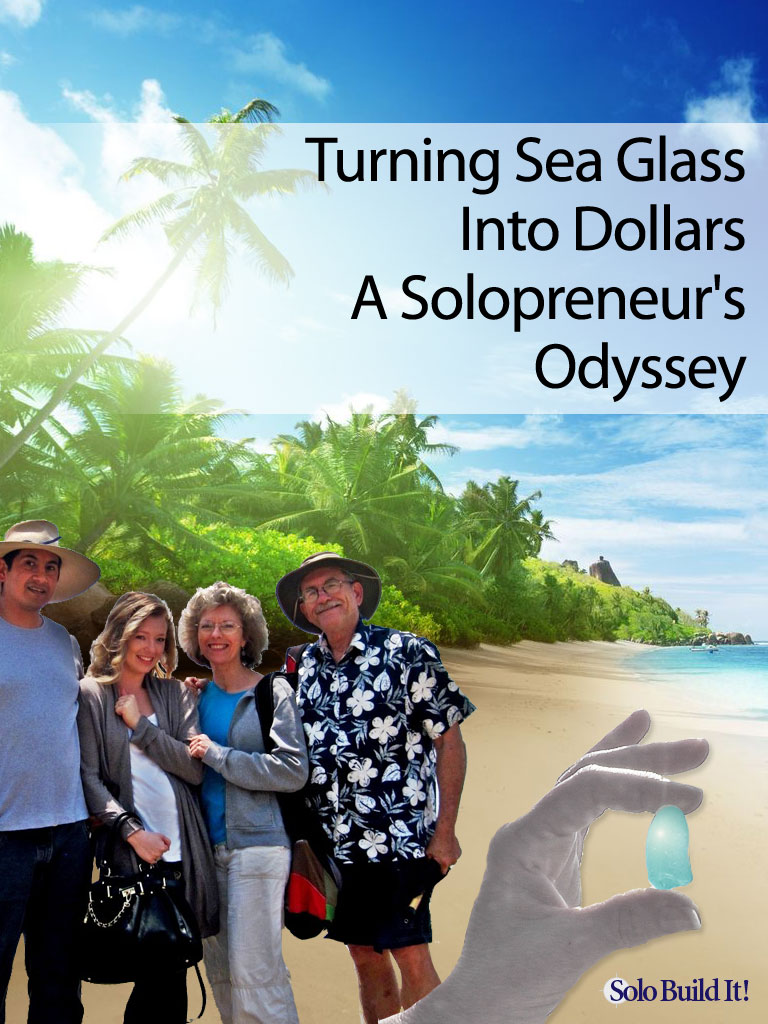
Latest posts by Margit Streifeneder (see all)
- How Much Does It Cost to Start a Blog? (Full Expense Breakdown) - April 25, 2024
- How to Buy a Blog or Website: A-to-Z Guide for Solopreneurs - April 4, 2024
- The Buzz on Bytes: Can I Sell AI-Generated Art on Etsy? - March 14, 2024

